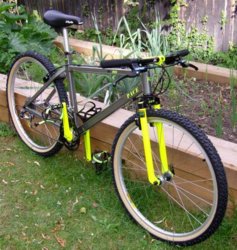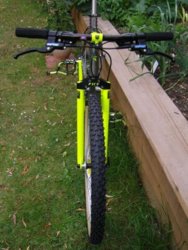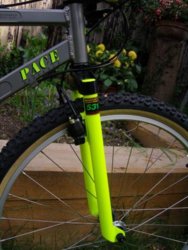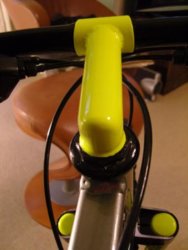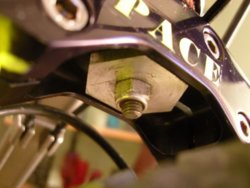SkipdiverJohn
Deplorable Brexiteer
- Location
- London
1 1/8" threaded seemed to be more popular on MTB's than it ever was on Road frames. Just remembered I've actually got two, not one, Raleigh MTB frames with 1 1/8" headsets, both 1991. If you look at the old Raleigh catalogues from that period, its clear that the 1 1/8" was marketed as a better/stronger spec for the top end lugged 501 & 531 frames. The cheaper 18-23 stuff made do with 1" headsets, but IIRC, Raleigh beefed these up by fitting old-school BMX 21.1mm stems into them, not the 22.2 mm you'd expect - so even the smaller 1" headset would have a stronger steerer made of thicker tubing than a Road frame. I recently scrapped a low-end early 90's Huffy MTB, that also had a 1" headset built with a BMX size stem, so it wasn't only Raleigh doing this.
I don't remember, BITD, seeing very many MTB's with bent forks, but bent Road forks weren't unusual; bent backwards towards the down tube if crashed into something solid, or bent forwards if subjected to a heavy landing - usually seen on stripped-down "tracker" bikes with cowhorn bars.
I don't remember, BITD, seeing very many MTB's with bent forks, but bent Road forks weren't unusual; bent backwards towards the down tube if crashed into something solid, or bent forwards if subjected to a heavy landing - usually seen on stripped-down "tracker" bikes with cowhorn bars.

